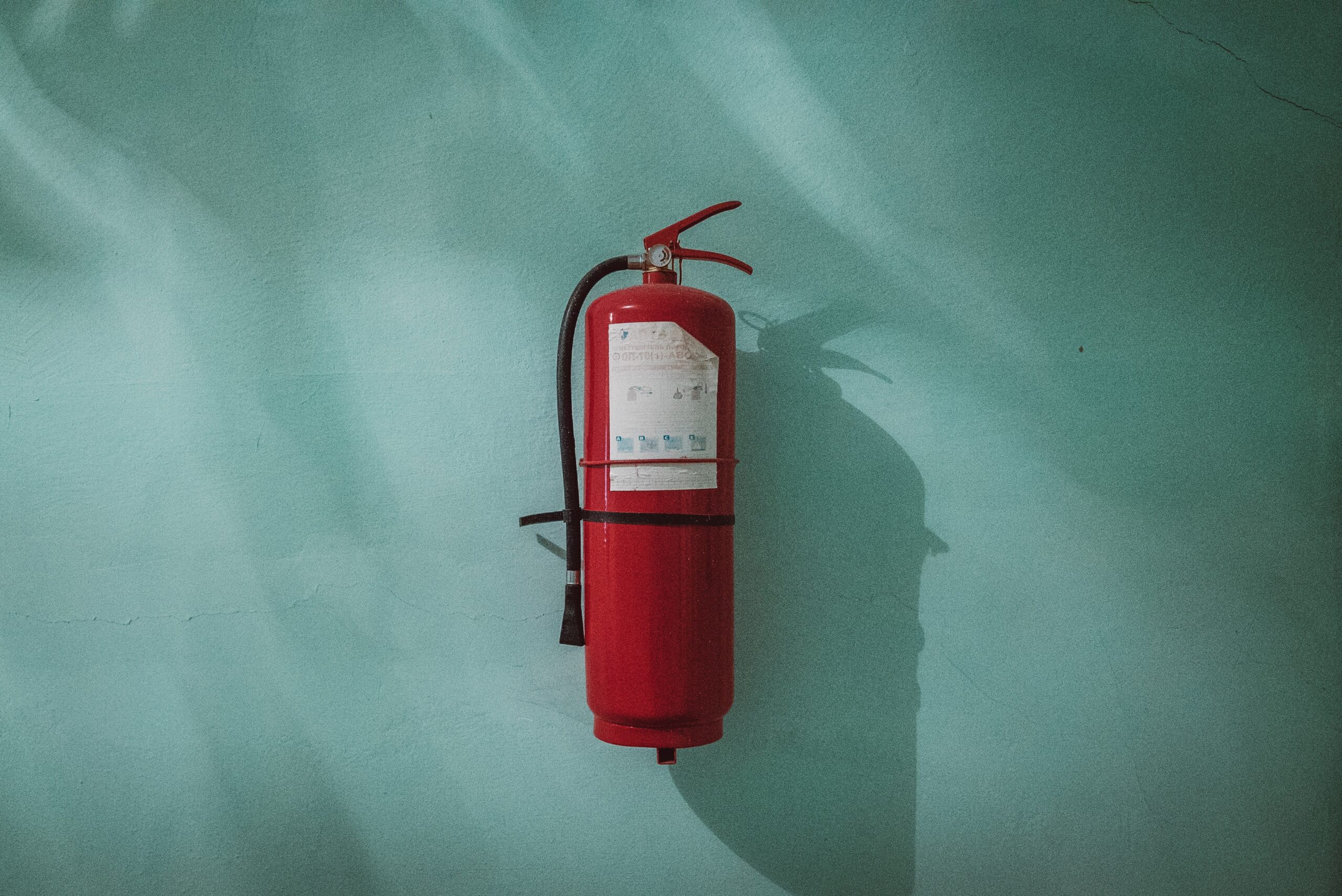The question, “How often do I need to replace my fire extinguisher?” is one that’s frequently asked by both home and business owners.
Fire extinguishers are an integral part of your residential and commercial fire prevention plan and fire safety in general. But how long do they last? And how can you tell if your extinguisher is still in working condition?
Here’s everything you need to know about how and when to replace your fire extinguisher. Our top fire extinguisher tips.
Fire Extinguisher Life Expectancy
So, how long do fire extinguishers last? What life expectancy should you prepare for?
The best bet is to check with the manufacturer of the fire extinguisher. However, a general rule of thumb that’s often used in the industry is:
Rechargeable fire extinguishers have a 10 to 12-year life expectancy, while non-rechargeable (aka disposable) fire extinguishers can be replaced after every 10 years.
But, this isn’t by no means a strict and binding principle as the type of extinguisher also has a bearing on the frequency of replacement. For example;
· Wet chemical fire extinguishers may be replaced after testing every five years.
· Dry chemical fire extinguishers may be replaced after six years.
If dry chemical fire extinguishers are able to reach their 12th year, they are required in that year to undergo hydrostatic testing.
All the same, when it comes to replacing your fire extinguisher you can’t just play it by the number of years that have passed. In addition, there are other ways to know if it’s time for a change. Let’s explore some of these.
To Replace Your Fire Extinguisher or Not?
What are some of the other ways to determine if it’s time to replace your fire extinguisher?
A visual inspection can help you determine if the canister has been damaged in any way and should therefore be immediately replaced. Signs it’s time to replace the fire extinguisher include:
· Leaking of the agent
· Visible corrosion and or rust
· Broken fire extinguisher handle
· Missing sticker
· The fire extinguisher was used to extinguish a fire
· An accidental fire extinguisher discharge occurred
· A cracked nozzle, hose, or one that’s clogged with debris
· Unsealed and or missing locking pin on the extinguisher’s handle
Are there any additional things that can invalidate your fire extinguisher? Yes!
What Voids a Fire Extinguisher?
A fire extinguisher’s lifespan can be shortened by any of the following:
1. Incorrect Storage
There is a right and a wrong way to store your fire extinguisher. And contrary to popular practice, fire extinguishers should ALWAYS be mounted upright.
What happens if you store your pressurized or non-pressurized fire extinguisher on its side or at an angle? This may interfere with the canister’s discharge system rendering it useless when you do need to use it.
2. Temperature Extremes
Fire extinguishers aren’t immune to temperature extremes. In fact, while fire extinguishers don’t typically explode when they overheat (because of the safety release valve which allows them to discharge their agent), they can get damaged and stop working properly.
Excessive temperatures above 120 degrees have been known to impair the elastomeric seals thereby decreasing the life span of the extinguisher.
When stored in cold temperatures (below -40 degrees), fire extinguisher valves and hoses have been known to crack. Some extinguishers might even freeze. Humid spaces must also be avoided as they can also lead to rust and corrosion.
3. Damage to the Canister
Has the fire extinguisher been punctured, suffered a crushing blow, or been tampered with in any way perhaps through vandalism?
Each of these things can ruin the integrity of the fire extinguisher rendering it faulty and up for replacement.
You may want to have a qualified technician assess the fire extinguisher before replacing it, however. It may simply need to be recharged after all. But if significant damage has occurred to the body then the extinguisher will need to be completely replaced.
Fire Extinguisher Routine Maintenance
Simply because your extinguisher doesn’t require yearly replacement is not a reason to avoid routine maintenance.
When it comes to fire prevention for work, businesses are mandated to schedule professional annual fire extinguisher inspections. This is good fire safety best practice.
During the professional maintenance inspection, fire specialists will check the physical state of the canisters as well as verify the integrity of seals and or tamper indicators. A new tamper seal may be installed and dated by the technician.
The fire expert will also verify that the fire extinguisher’s operating instructions are clearly visible and legible.
During routine maintenance, the technicians may recommend that the fire extinguishers be recharged. This typically happens every six years for rechargeable extinguishers. Recharging is vital as you want the chemicals within the fire extinguisher to be fully charged and have the pressure needed to discharge when needed.
Ongoing monthly maintenance may be done in-house by your own employees. All it involves is checking the pressure gauge to ensure that the gauge needle hasn’t gone below the ideal safe zone. If the needle is outside the green zone then the pressure within is too low and it’s time for a replacement.
Wrap Up
While fire extinguishers don’t have an expiration date there are things that nullify them and it’s important to be wary of these so you can replace or recharge on time.
Are you ready to schedule your fire extinguisher inspection? Our Nutech Fire Prevention technicians are on hand to inspect your fire extinguishers and guarantee they are in optimal working condition.
Not only that, but we can also design custom fire safety plans, conduct on-site routine testing, fire training, gas detection, inspections, and maintenance of fire protection systems such as sprinklers, fire extinguishers, fire alarms, emergency lighting, emergency backup generators, and exit lighting.
Request a free quote today.

